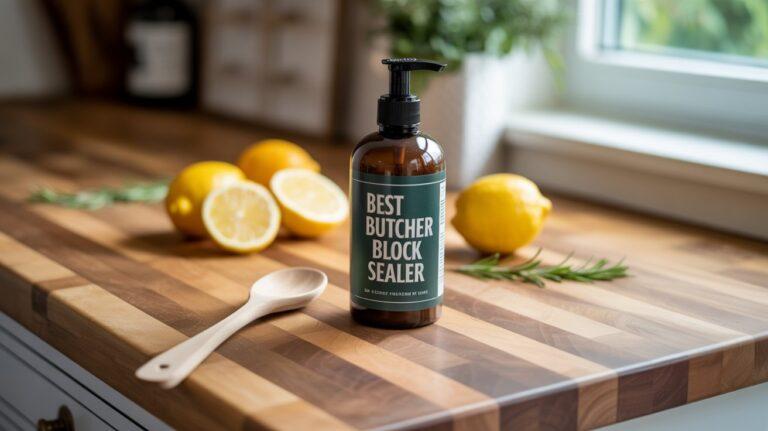Discovering the Best Flex Seal Solution: A Comprehensive Guide to Choosing Which Flex Seal Works Best
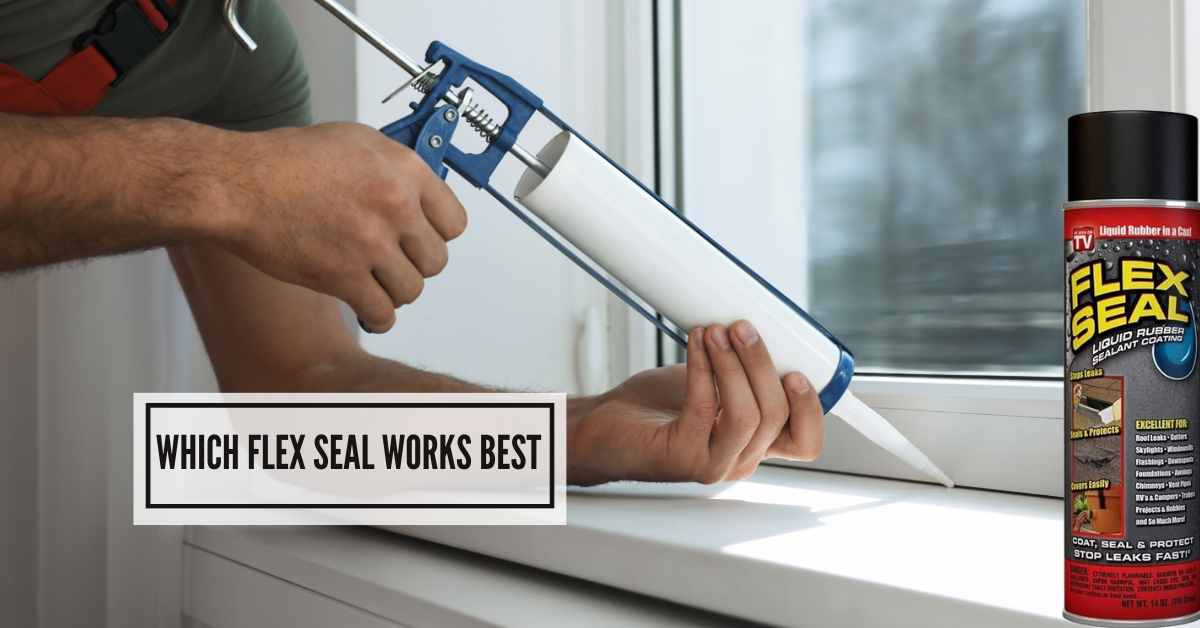
Generally, flex paste works best for concrete cracks and gaps. The solution must be penetrated deeply to form a strong and long-lasting seal. But you can use a flex seal spray, flex tape, or flex glue to fill the leaks of a roof.
Flex seals are incredibly versatile. They create a thick rubberized surface to stop leakage of water, air, and moisture. You can use flex seals on all types of indoor and outdoor projects, such as concrete, roofs, pipes, gutters, basement walls, wood floors, etc. However, I will discuss which flex seal works best for concrete and roofs and how to use them. Keep scrolling!
Which Flex Seal Is Best For Concrete?
A lot of options are available when it comes to sealing cracks of concrete with a flex seal.
But I personally think Flex Paste is the best flex seal for concrete. It works tremendously well on concrete surfaces to easily fill gaps, cracks, and holes. You can use it for different indoor and outdoor projects and repairs.
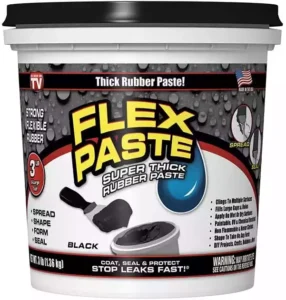
This flex seal for concrete cracks will form a strong, flexible, watertight, rubberized coating to prevent moisture, water, and air from seeping through the concrete surface.
Make sure the first application is completely cured before applying another. Use a trowel, putty knife, or a similar tool to apply the solution.
The ideal curing time can be anywhere from 24 hours to 48 hours, depending on the humidity, temperature, and thickness level.
How To Use Flex Seal On Concrete?
Is your concrete basement, driveways, or backyard seeping water through its cracks? These leaks in concrete slabs may result in huge damage if you don’t address the issue immediately.
You want to stick with the following steps to fill the cracks of a concrete surface with a flex seal.
Step: 01—Prepare The Vulnerable Spots
Turn off your primary water system. Work on a well-ventilated area. Keep kids and pets away if you are fixing driveways or backyard concrete.
The affected area must be fully dry. There should not be any water from dew, rain, or snow.
Use masking tape, plastic sheeting, or cardboard to cover and protect nearby surfaces or objects.
Step: 02—Clean The Concrete Cracks
Before using any flex seals, remove dirt, dust, and debris from the concrete cracks.
If the fissures or fractures of cracks have hard residues, use a cleaning solution, such as a concrete cleaner or degreaser, to get rid of them.
Grab a fresh rag to wipe off the surface. It will ensure proper adhesion and create an effective barrier.
Step: 03—Apply Flex Seal Liquid
Avoid diluting flex seal liquid with water or solvents. It will compromise the quality of the product.
Stir the flex seal liquid for 30 seconds gently. You can use a putty knife or a trowel for precise application and smoothing of the sealant.
Maintain a steady and controlled motion, smoothly moving the applicator (putty knife or trowel) along the concrete crack to ensure even application and proper sealing.
Test its pattern on old paper or cardboard. Remove any excess to achieve a finished look.
Step: 04—Inspect The Applied Area
Allow the sealant to dry properly. It generally takes 24 hours for a complete cure.
Before applying the second coat, inspect the first coat. A single thick coat may save you time.
However, several layers of thinner coats are better for better penetration, adhesion, and flexibility. It might be a bit time-consuming, but it is worth the effort in the long run.
After applying several coatings, let it cure for at least 48 hours. No foot traffic during this period.
Also, avoid placing any object on the concrete surface until it cures fully. That’s it!
How To Fix A Roof Leak With Flex Seal?
Some people asked this question: Can you use flex seal to fix a roof leak? Yes, you can repair it if the leak is around 3/8 to 1/2 inch wide.
You can go through the following steps to learn how to fix a roof leak with a flex seal.
Step: 01— Locate The Origin Of The Leakage
The first substantial job is figuring out where the leak is exactly happening.
A simple technique you can use is adding a minor quantity of water into the suspected area. Then, check the bottom area to see if water is coming through the hole.
Avoid pouring water in all spots at a time. Otherwise, you will be confused about where the water is coming from. Test a small area at a time for precise results.
Give special attention to roof valleys, flashing around chimneys or vents, damaged shingles, skylights, and areas with poor sealing or ageing materials.
Step: 02— Clean The Leaks
Once you figure out all the leaks, clean them thoroughly. If you have not cleaned the roof for a long time, it may have accumulated a lot of dirt, grease, leaves, moss, oil, etc.
Use a roof rake brush or stiff brush to get rid of all the unwanted things stored inside the cracks.
Wash the areas properly if needed. It will ensure a clean surface for proper adhesion of the sealant.
Step: 03— Apply The Flex Seal
After cleaning the roof leaks and holes properly, prepare the flex seal correctly, depending on its type.
Apply the flex seal carefully on all gaps one by one. If you want to add one layer over another, allow the first coating to cure completely.
Follow the manufacturer’s recommendation for the curing time. Remove any excess sealant around the leak areas.
Which Flex Seal Is Best For Roof Leaks?
Many people often ask me this question: Is flex seal good for roof leaks? Of course, they are an excellent choice for filling gaps or cracks.
But choosing the right product is vital. Also, you want to apply it correctly. The following are the common products used for roof leaks.
Flex Seal Spray
If you want to save a lot of time, flex seal spray is the best choice. They work faster. You won’t have to worry about constant dipping and wiping issues.
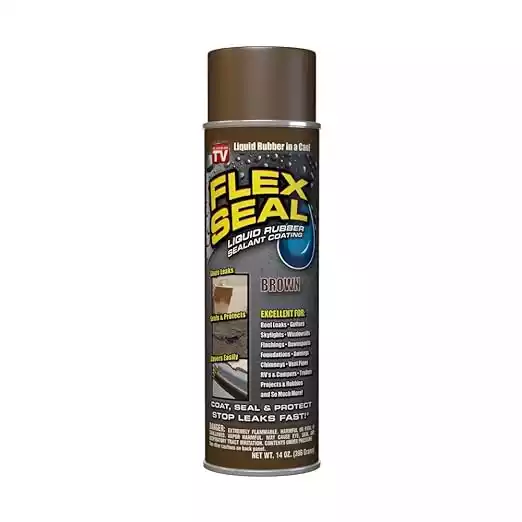
This is my top favorite flex seal spray. It can seep through holes and leaks in the roof quickly.
Use a spray gun for better control over fluid flow. It will ensure light and even coats, especially in hard-to-reach areas.
Allow the solution to dry for 24-48 hours. Once it dries fully, it will create a watertight, flexible, rubberized coating.
Flex Tape
Does your roof require immediate repair? If so, flex tape is the best choice. This super-strong waterproof tape can instantly adhere to any type of roof surface.
I have personally liked this one as it has so many positive reviews. This flex tape can withstand extreme temperatures and weather conditions.
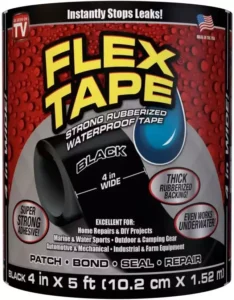
It will become stronger over time with more pressure. You don’t have to worry about UV rays, too. This versatile and powerful adhesive is suitable for application in extreme weather conditions.
It is available in various sizes, such as 4-inches, 8-inches, 12-inches, etc. Use a razor blade or high-quality scissors to cut the piece and fill the gaps.
Flex Glue
Flex glue is another compelling product to fill cracks in a roof immediately. You can choose this option if you are looking for an extremely powerful, rubberized, waterproof adhesive.
This super-thick adhesive will hold tightly to the roof surface for a prolonged time. It won’t crack or shrink easily. You won’t have to use any braces to use it.

Plus, this flex glue is solvent-free, UV- and mold-resistant. Cut the last portion of the nozzle for better and smoother flow of the glue.
Exert strong force for 10-30 seconds to achieve an immediate gripping action. Use a dry rag or paper towel to remove any excess immediately. You may have to wait 24-48 hours for a complete cure.
Will Flex Seal Stop Water Leaks?
Flex seals can stop water leaks as their special formula creates a protective rubberized barrier.
However, if you use it on any areas where it is exposed to continuous water pressure, the sealant won’t be too much long-lasting.
In such a case, it is best to fill the bottom area of the gaps with foam or rubberized material. Then, seal the upper portion with a flex seal, flex glue, or flex tape.
However, any areas that are not exposed to continuous air pressure flex seals can provide long-lasting protection. The solution will seep through cracks or holes to seal out moisture and air.
Make sure to consider the manufacturer’s recommendation to learn about the compatibility of the product. It is also necessary to figure out whether using the flex seal will void the product warranty.
FAQ’s
Which Flex Seal Product is Best for Outdoor Use?
Flex Seal Spray and Flex Tape are both excellent for outdoor applications due to their weather resistance.
Can Flex Seal Products be Used on Wet Surfaces?
Yes, most Flex Seal products can be applied to wet surfaces, but it’s always best to read the specific instructions for each product.
How Long do Flex Seal Products Take to Dry?
Drying times vary, but typically it takes 24 to 48 hours for Flex Seal products to fully cure.
Are Flex Seal Products Paintable?
Yes, once fully cured, they can be painted over to match the surrounding area.
Which Flex Seal Product is The Strongest?
Flex Tape is known for its incredible strength and is often considered the strongest of the Flex Seal range.
Conclusion
When it comes to sealing gaps and cracks in a concrete or roof surface, you have many options to choose from. Flax seals are available in various types, such as liquid, paste, tape, glue, etc.
Before choosing any option, you must consider its compatibility with the particular surface.
The most important thing is to consider whether it will give a long-lasting result without compromising its functionality.
I have already discussed which flex works best for concrete and different roof surfaces. If you are still facing any issues, feel free to mention them in the comment box.

I am Robert Sandin, a professional sealing expert with a diverse range of expertise. From concrete to various other materials, I possess in-depth knowledge and experience in the art of sealing. On my website, I offer valuable tips and expert recommendations on sealing techniques and products for different materials. Whether it’s concrete, wood, metal, or more, I am committed to providing you with the guidance you need for successful sealing projects.

